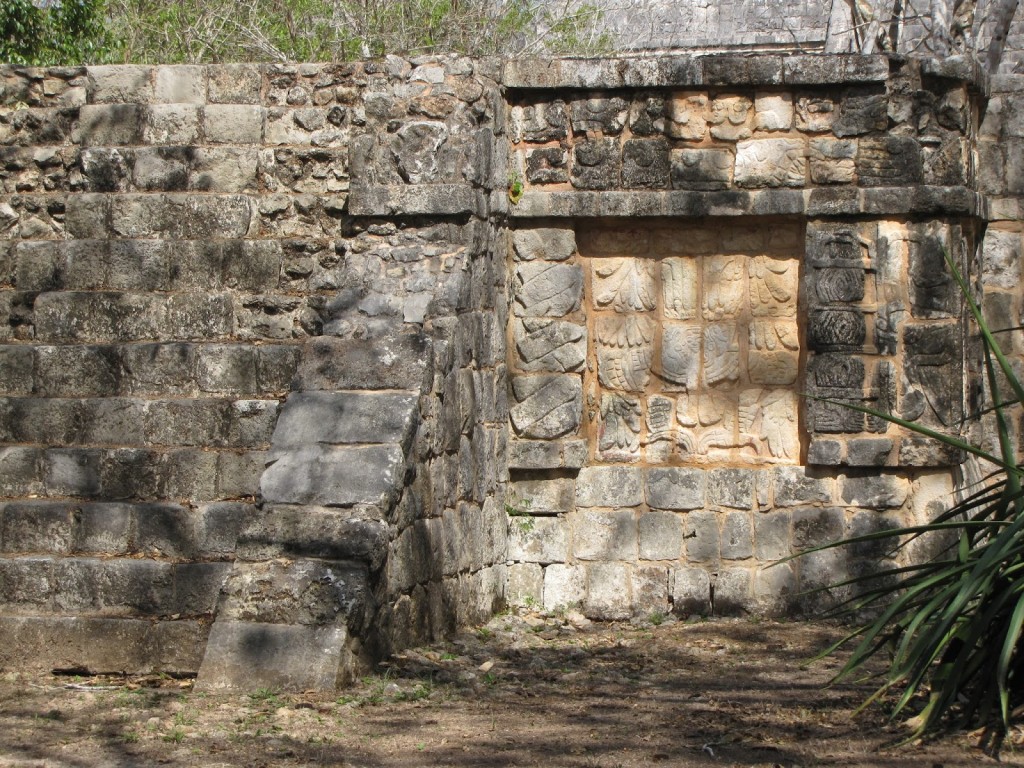
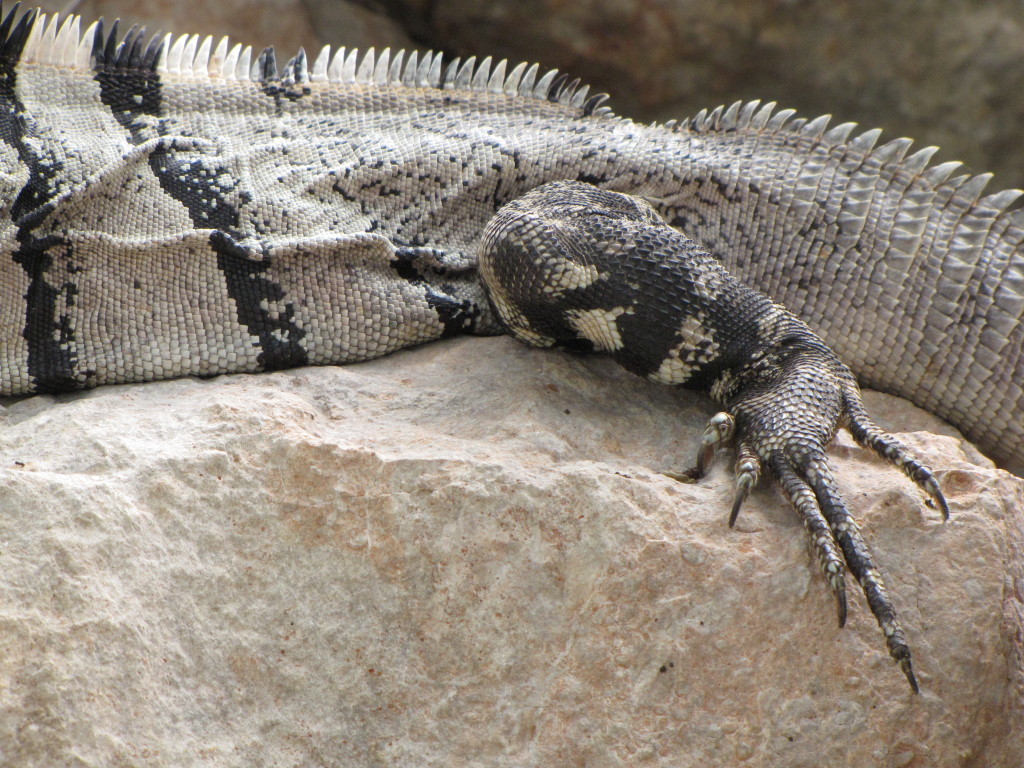
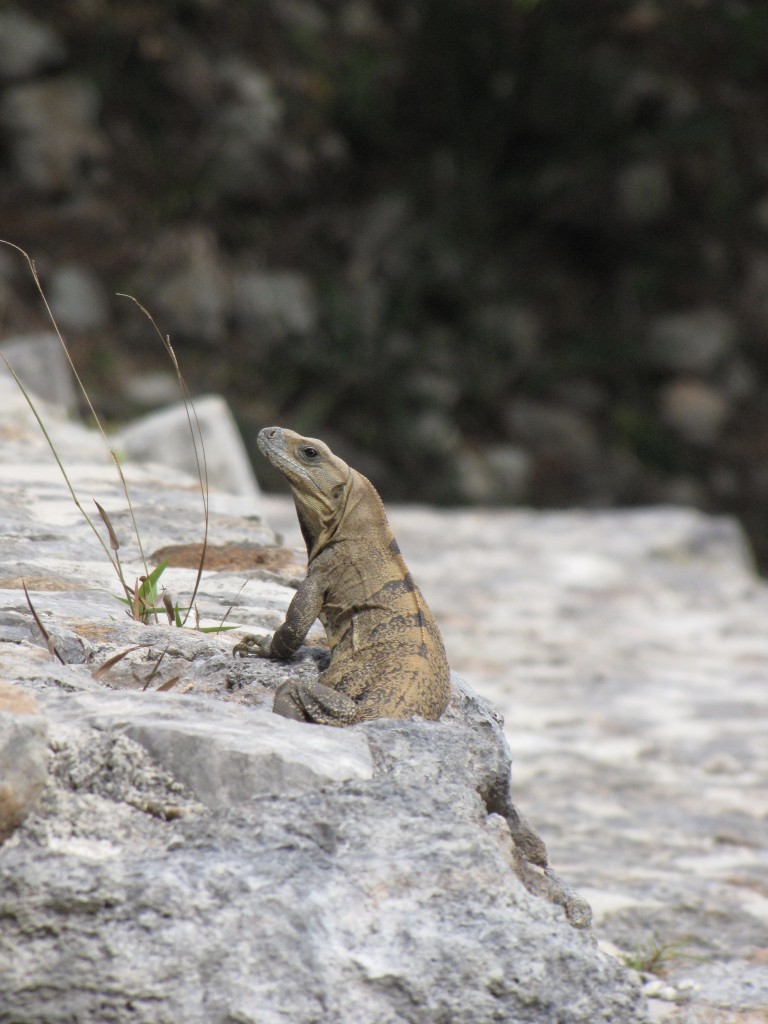
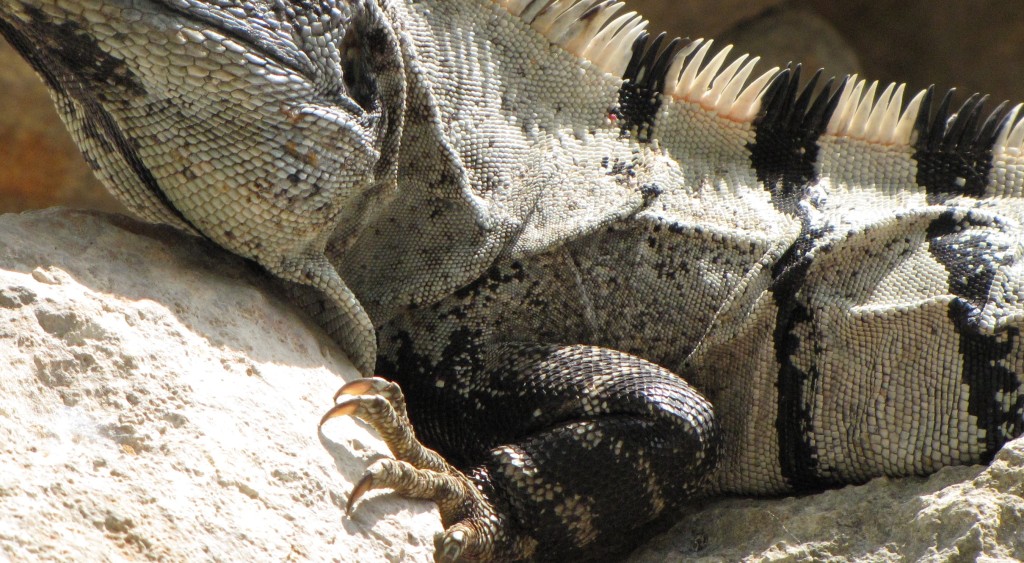
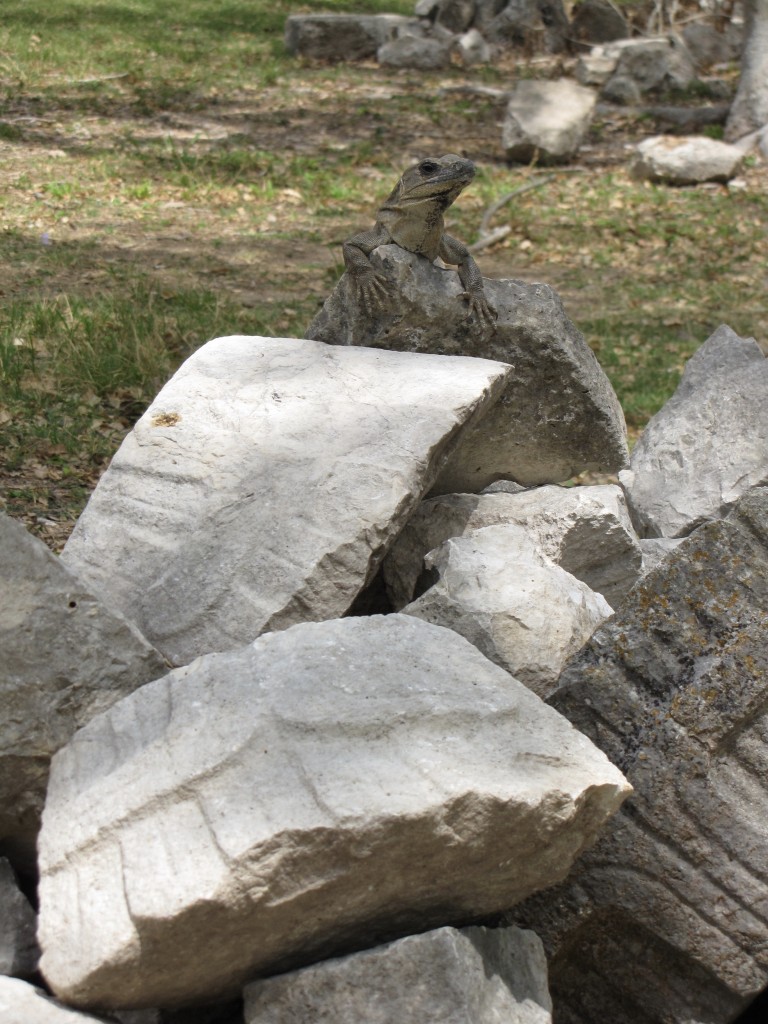
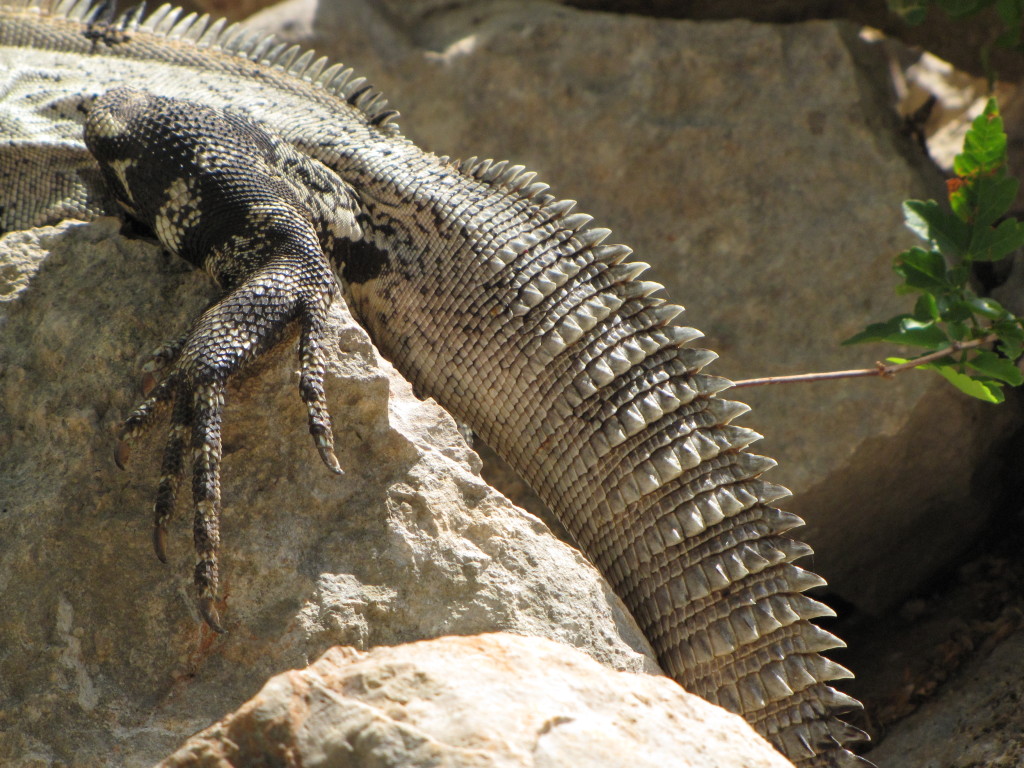
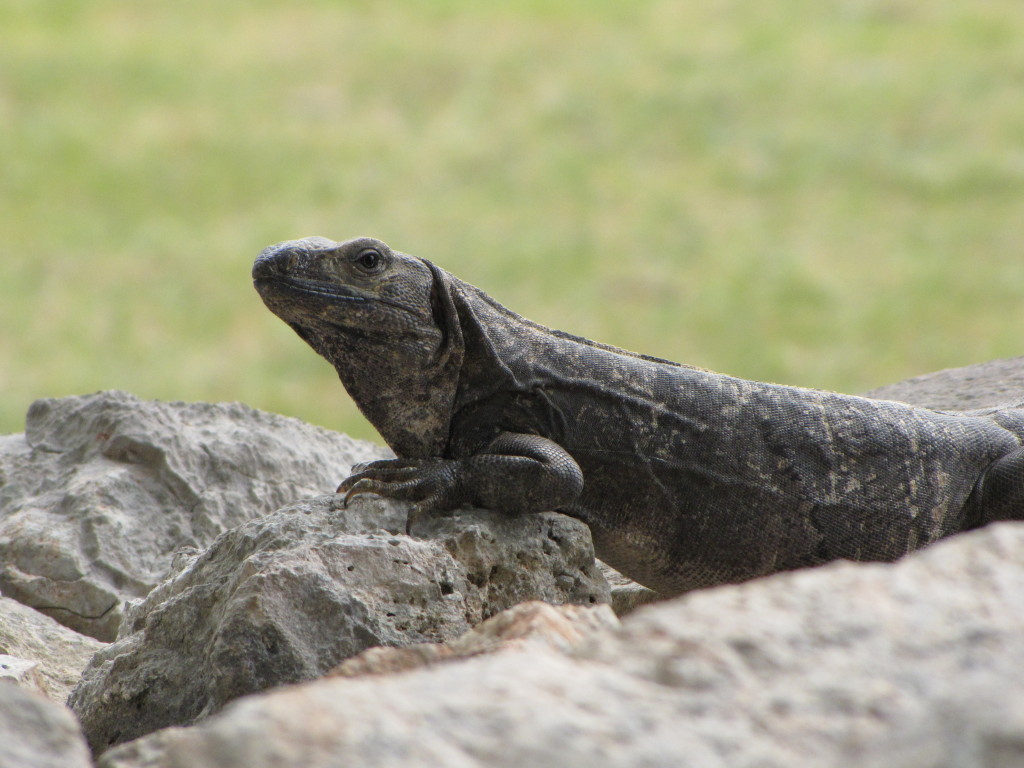
All photos by Renée DeVoe Mertz, May 23, 2015.
vegetarian in a leather jacket
art, travel, culture







All photos by Renée DeVoe Mertz, May 23, 2015.
The Post-Classic Maya city of Chichén Itzá [“beside the well of the Itza”] is not only a UNESCO World Heritage site but also, since 2007, one of the “new” seven wonders of the world. It is also a fairly easy day trip from either Cancún or Mérida, and is thus one of the most visited archaeological sites in Mexico, if not the world.
Although popular descriptions often refer to the city as a Maya-Toltec settlement, the history of Chichén Itzá and its associated architecture is still contested. The more traditional view, and the one presented on the associated UNESCO webpage, is that the original Classic period settlement was conquered by the Toltecs, and that most of the major buildings now associated with the city represent a fusion of the two cultures. This narrative dovetails nicely with a Maya legend of the arrival of a king from Central Mexico, identified as Kukulkan (Feathered Serpent), and goes some way in explaining the predominance of plumed snakes in Chichén Itzá’s architecture, as well as the inclusion of other features more associated with central Mexican cultures, including images of death and sacrifice.
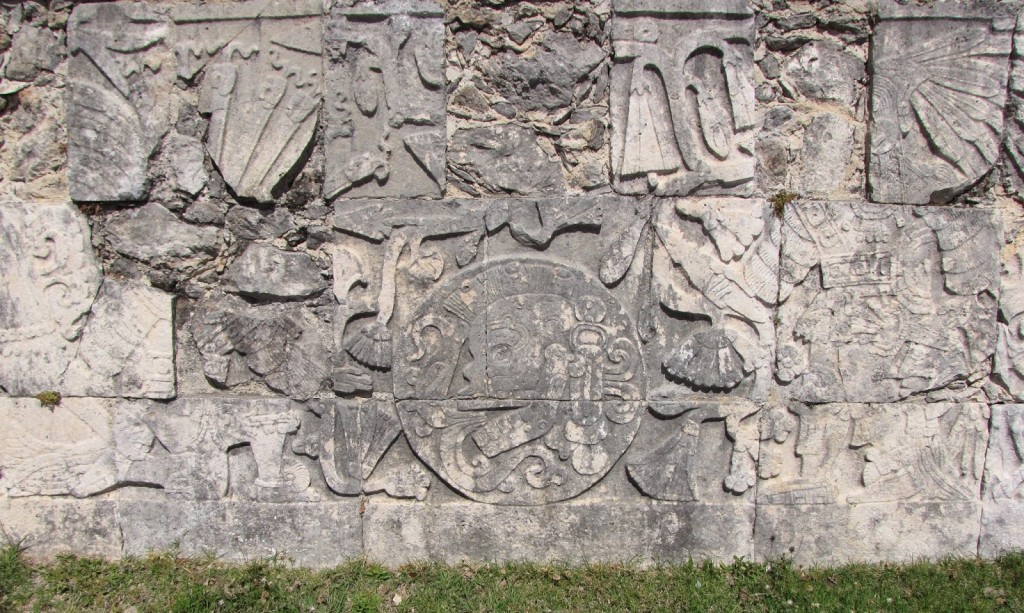
There are, however, problems with this theory. The most significant issue is a matter of timing—namely, archaeologists now believe that the buildings once thought to represent Toltec features actually pre-date the civilization which supposedly influenced them [Drew 1999, 371]. If true, this might point to a reversal of influence, in which the Toltecs incorporated imagery from the Maya, not the other way around. Indeed, many of the supposedly “Toltec” aspects of Chichén Itzá are in fact present in other, earlier Maya settlements. The feathered serpent, for instance, was already a common motif in Maya culture centuries before the establishment of the great centers of the Yucatán, and can be traced to even earlier origins within the Olmec civilization. Likewise, clear evidence of the importance of war and the practice of human sacrifice at Classic period settlements, such as the murals of Bonampak, have long since forced archaeologists to set aside more romantic notions of the Maya as an idilic civilization of peaceful scholars corrupted by blood-thirsty outside conquerers.

Regardless of who was responsible, the great architecture of Chichén Itzá is both physically imposing and iconographically impressive. Since the site’s inclusion as one of the wonders of the world, however, access has become increasingly restricted. Visitors can no longer climb the stairs of El Castillo or enter its interior chambers, nor can they walk among the many columns of the Temple of the Warriors.
Back in 1999, I had the opportunity to climb the pyramid and chose not to. This time, I promised myself I would brave the heat and precarious steps in order to take a peek at the inner chamber. To this end, we arrived early and made a beeline from the entrance directly to El Castillo. After months of anticipation, it took me a while and multiple laps around the foot of the pyramid to accept the eventual realization that I had forever missed my chance to see the temple interior. Putting aside my personal disappointment, however, these new measures are clearly important precautions for preserving the heavily visited ruins, and ones the government has been wise to undertake.
That being said, missing this opportunity definitely increased the pressure to do everything we could at the subsequent, less regulated, sites we visited.
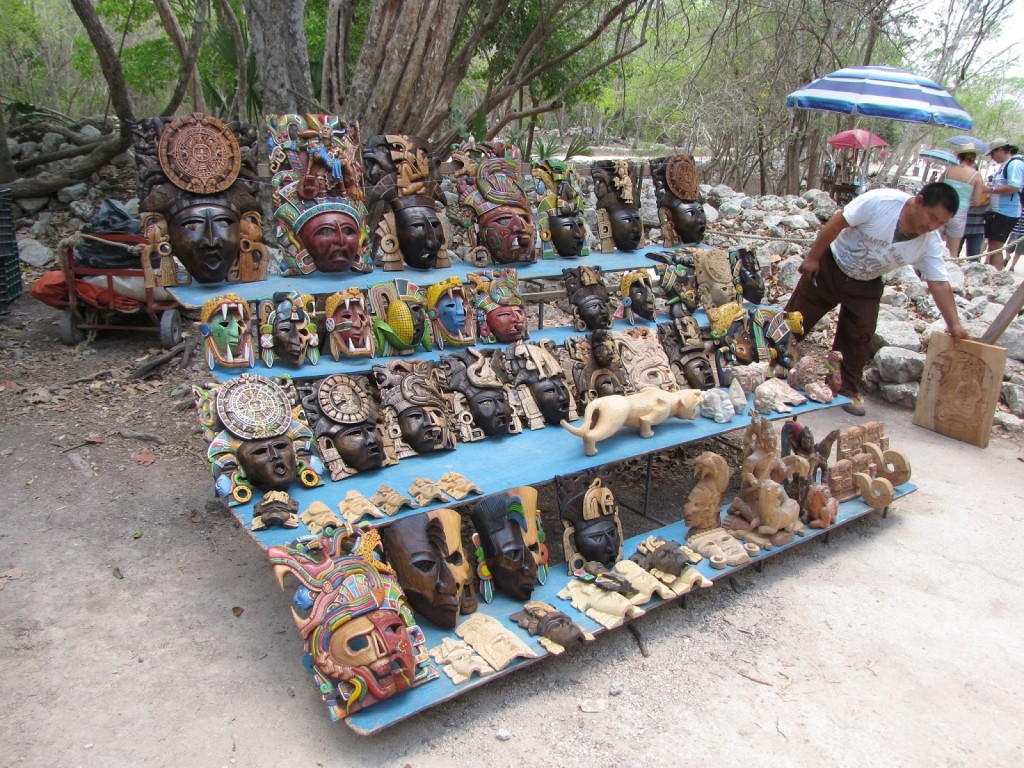
Another consequence of being a popular tourist destination is the inclusion of many artisans and souvenir sellers scattered amongst the shaded areas of the grounds. This feature is somewhat unique to Chichén Itzá, as other sites either require such stalls be outside of the grounds—as at Tulum—or simply don’t draw enough people to have more than one or two merchants present, if there are any at all.
The wares on offer vary greatly, from mass-produced or poorly made souvenirs to unique objects crafted by skilled artists. If you are interested in making a purchase, it’s probably best not to get the first thing that catches your eye, as many vendors will have similar—and possibly better-constructed—items for sale. But if, after looking around, you do find something you like, buy it. We ended up purchasing a mask by Efrain Cetz there, and although it took at least a half hour and the last of our energy to find him again, I’m glad we did. For while we later saw other, vaguely similar, masks elsewhere, they never appealed as much as the one we already had. In addition, buying directly from the artist allowed us to speak with him about his ideas and practice, which in turn gave us a better appreciation of not only what we were taking home, but of how traditional Maya stories and concepts are being reinterpreted by contemporary people.
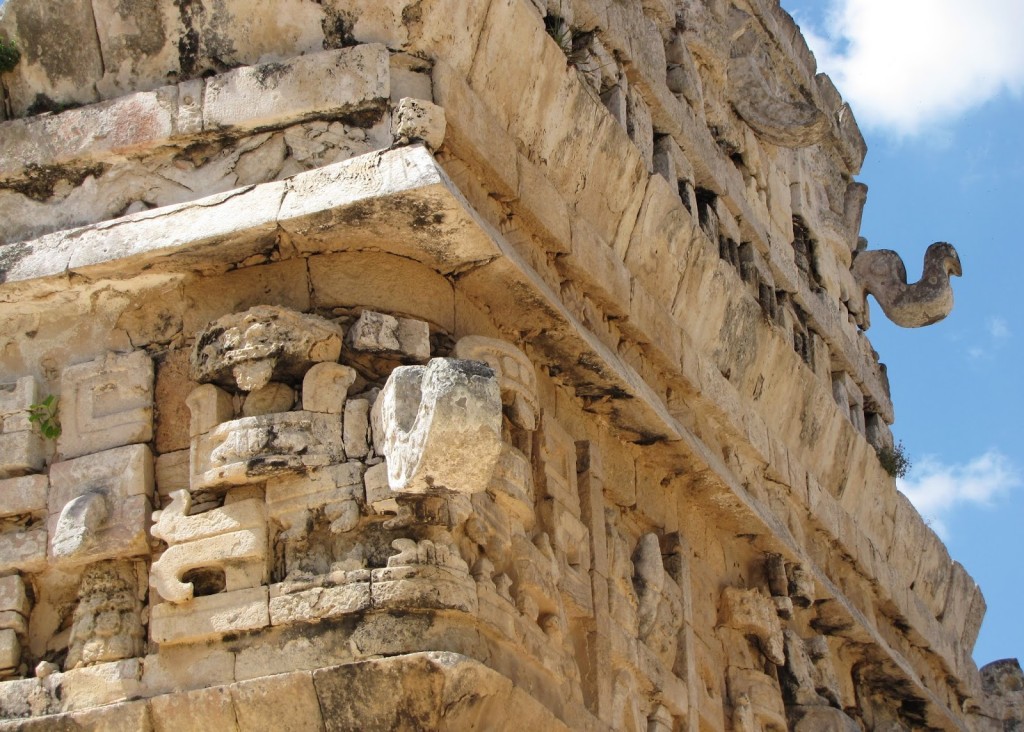
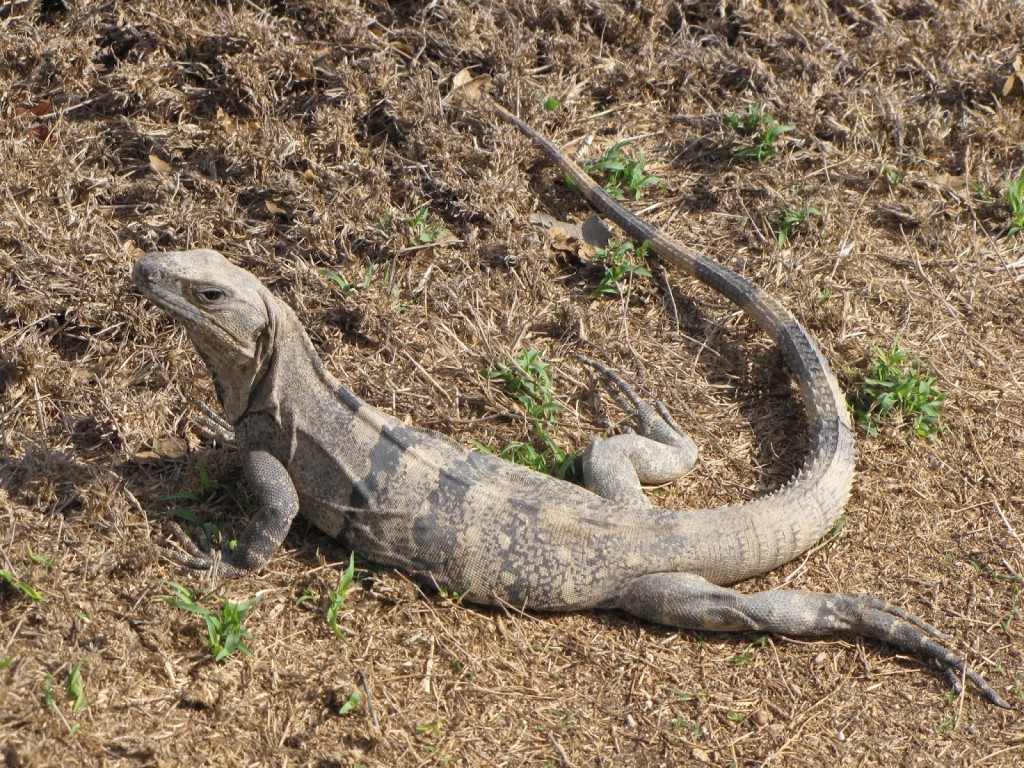
For more on the site’s layout, history, and visiting information, see the INAH website, which has text in both English and Spanish.
Highly subjective personal rating: 9/10 [Bucket-list worthy]
